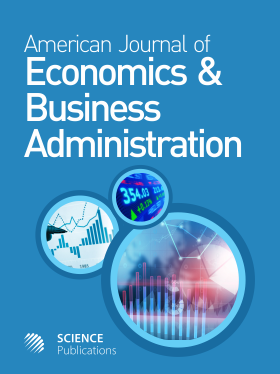Leptospirosis in the Tropics: When Prevention Doesn't Easily Sell as a Ton of Cure
- 1 Cherry Hill, United States
Abstract
Problem statement: Human leptospirosis -- the most widespread zoonotic disease -- thrives in tropical and subtropical climates. It is seldom addressed ex ante or prior to an outbreak or expected outbreak by governments of high-risk countries. Whether common, post-exposure treatment with antimicrobial drugs is more cost-efficient than reducing animal reservoir populations was the overarching question that guided this study. A related question in this study was how to establish comparability of pertinent price or cost estimates. Approach: Annualized price samples of government-approved, antimicrobial therapies and proposed rat and other rodent chemical agents (rodenticides) were gathered from three leptospirosis-endemic countries: Brazil, the Philippines and Sri Lanka. Certain price data were adjusted for present value based on a linear cost accounting function. Two-tailed hypothesis-testing (α = 0.05) was performed to determine any statistically significant differences in pricing antimicrobial therapies and rodenticides in each country under investigation. Results: Shared socio-demographic characteristics of infected populations appear to support the need for ex ante containment of rat/rodent reservoir populations in tropical and subtropical countries. In each surveyed country, we found tcrit>tobs>-tcrit. Therefore, the null hypothesis, µantimicrobial = µrodenticides = µantimicrobial - µrodenticides = 0, could not be rejected in favor of the alternative, µantimicrobial ≠ µrodenticides = µantimicrobial - µrodenticides ≠ 0. Conclusion: Applications of Price Estimation (PE) methods in financial economics, such as present value, help optimize health decisions concerning zoonotic diseases. Leptospira transmission in Brazil, the Philippines and Sri Lanka illuminate the need for broad and cohesive policies that take into account zoocentric measures. These may be critical in high-risk, tropical and subtropical countries that periodically experience flooding, standing water and increased rainfall.
DOI: https://doi.org/10.3844/ajebasp.2010.307.316

- 5,399 Views
- 3,678 Downloads
- 2 Citations
Download
Keywords
- Antibiotic prophylaxis
- antimicrobial drugs
- demonstration effects
- ex ante
- exposure
- leptospirosis
- present value
- price estimation
- rodenticides
- zoocentric
- zoonosis
